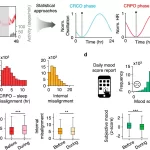A pioneering study utilizing Google Street View has uncovered a groundbreaking connection between the built environment and the risk of coronary artery disease, shedding new light on the role of urban design in cardiovascular health.
Published in the European Heart Journal, the study conducted by researchers from University Hospitals Harrington Heart & Vascular Institute and Case Western Reserve University, Ohio, USA, along with Dr. Zhuo Chen, a post-doctoral fellow, demonstrates how machine vision-based approaches can analyze hundreds of elements of the built environment visible on Google Street View images to predict the risk of coronary heart disease in different neighborhoods.
Coronary heart disease, characterized by the obstruction of blood flow to the heart due to the buildup of fatty substances in the coronary arteries, is a leading cause of cardiovascular disease worldwide. The study reveals that features such as buildings, green spaces, pavements, and roads visible on Google Street View can predict 63% of the variation in coronary heart disease risk between different areas of US cities.
Lead researcher Prof. Sanjay Rajagopalan emphasized the significance of understanding how the environment influences cardiovascular health, stating that the zip code may be a better predictor of heart disease than personal health measures. By leveraging convolutional neural networks, a type of artificial intelligence, the researchers analyzed over half a million Google Street View images from seven US cities, correlating these features with rates of coronary heart disease in small geographical regions known as census tracts.
The study identified several environmental factors associated with heart disease risk, with green spaces and walkable roads linked to lower risk, while poorly paved roads were associated with higher risk. Prof. Sadeer Al-Kindi underscored the potential of these findings to inform heart-healthy urban planning, suggesting that computer vision approaches could play a pivotal role in identifying and addressing environmental factors influencing cardiovascular health.
Dr. Rohan Khera from Yale University School of Medicine, USA, praised the study’s innovative use of Google Street View imagery, emphasizing the importance of understanding how the visual appearance of neighborhoods correlates with cardiovascular health outcomes. He highlighted the need to use this information strategically to identify vulnerable communities and prioritize efforts to improve cardiovascular health where it is most needed.
As urban populations continue to grow and face new challenges such as climate change, the study’s findings underscore the critical importance of leveraging technology to assess and address environmental factors affecting public health. By harnessing the power of artificial intelligence and computer vision, researchers aim to pave the way for heart-healthy urban environments and improve cardiovascular outcomes for communities around the world.











